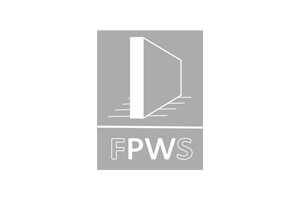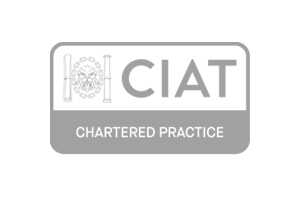Permitted Developments
Permitted Development. What is it and has it helped Britain building?
As it is not always clear how this scheme can benefit householders, we decided to provide a brief description here and then provide you with further sources of information. Despite the widespread information available on permitted development or “ automatic planning approval” the exact criteria is still difficult to understand unless you deal with these rules on a daily basis.
Essentially, the Conservative government brought in the permitted development rights in order to speed up the planning process and reduce the paperwork required for simple developments. Surveys showed that private individuals were unsure about the exact planning procedure and had in general a fear of the process. Some believed the process to be drawn out, expensive and without any guarantees, so this affected their decision to build.
The planning portal has a handy interactive home, which explains the criteria in an easy to understand format. https://www.planningportal.co.uk/info/200125/do_you_need_permission
For a quick glance at the criteria that you need to meet to make use of this scheme, I have copied the summary rules for you below.
Single-storey extension
Summary
An extension or addition to your house is considered to be permitted development, not requiring an application for planning permission, provided certain limits and conditions are met.
1. On designated land cladding of any part of the exterior of a dwelling (and extensions) with stone, artificial stone, pebble dash, render, timber, plastic or tiles is not permitted development.
*Designated land includes national parks and the Broads, Areas of Outstanding Natural Beauty, conservation areas and World Heritage Sites.
2. Extensions (including previous extensions) and other buildings must not exceed 50% of the total area of land around the original house.
The term ‘original house’ means the house as it was rst built or as it stood on 1 July 1948 (if it was built before that date). Although you may not have built an extension to the house, a previous owner may have done so.
* Sheds and other outbuildings must be included when calculating the above 50% limit.
3. Extensions forward of the principal elevation or side elevation of a house and fronting a highway are NOT permitted development.
4. On designated land side extensions are not permitted development.
On designated land and Sites of Special Scientific Interest the regime for larger single-storey rear extensions (see point 9) which runs until 30 May 2019 does NOT apply.
5. Materials used in exterior work to be similar in appearance to those of the exterior of the existing house. This condition does not apply when the extension is a conservatory.
6. Width of side extension must not have a width greater than half the width of the original house.
7. Side extensions to be single storey with a maximum height of four metres.
8. If extension is within two metres of a boundary maximum eaves height should be no higher than three metres to be permitted development.
9. Single storey rear extension must not extend beyond the rear of the original house by more than 3m an attached house or by 4m if a detached house.
In addition, outside designated land and Sites of Special Scientific Interest the limit is increased to 6m if an attached house and 8m if a detached house until 30 May 2019.
These increased limits (between 3m and 6m and between 4m and 8m respectively) are subject to the neighbour consultation scheme.
10. Single storey rear extension must not exceed a height of four metres.
11. Maximum eaves and ridge height of extension no higher than existing house.
Two-storey rear extension
Summary
(Extensions of more than one storey)
An extension or addition to your house is considered to be permitted development, not requiring an application for planning permission, provided certain limits and conditions are met.
1. On designated land extensions of more than one storey are not permitted development.
* Designated land includes national parks and the Broads, Areas of Outstanding Natural Beauty, conservation areas and World Heritage Sites.
2. Extensions (including previous extensions) and other buildings must not exceed 50% of the total area of land around the original house.
The term ‘original house’ means the house as it was rst built or as it stood on 1 July 1948 (if it was built before that date). Although you may not have built an extension to the house, a previous owner may have done so.
* Sheds and other outbuildings must be included when calculating the above 50% limit.
3. Maximum eaves and ridge height of extension no higher than existing house. If extension is within two metres of a boundary maximum eaves height should be no higher than three metres to be permitted development.
4. Extensions of more than one storey must not extend beyond the rear wall of original house by more than three metres or be within seven metres of any boundary opposite the rear wall of the house.
5. Roof pitch of extensions higher than one storey to match that of the existing house, as far as is practicable.
6. Materials used in exterior work to be similar in appearance to those of the exterior of the existing house.
7. Any upper-floor window in a wall or roof slope in a side elevation must be obscure-glazed and non- opening unless the parts, which can be opened, are more than 1.7 metres above the floor of the room in which it is installed.
8. No balconies or verandas are permitted development.
Has permitted development actually helped increase construction activity?
Since being introduced in May 2013, figures showed a huge increase in applications received and approved. In Oct 2014 figures showed that in the 3 months to June, councils across the country received 7,700 applications for home extensions – 6,500 of which got the go-ahead without needing to go through the whole planning process.
The figures also show how permitted development measures to enable redundant office buildings to be turned into new homes are also being taken up, with 1,100 applications received by councils in the last quarter and 900 approved during the same period.
In November 2015 Gareth Davies from the Croyden Advertiser wrote: Since permitted development was introduced temporarily in May 2013 the scale of office-to-residential conversions in Croydon has been unprecedented, with 1,705 flats approved covering 100,00 sq m of empty town centre office space.
Gareth further reports that some developers are abusing the development rights.
Developer Inspired Asset Management has used the power to create 467 flats, including some studio apartments which are less than half the size of the Mayor of London's 37 sq m recommendation.
In fact, figures obtained by the Advertiser show that 27 of the 29 buildings converted using permitted development feature homes that would have been rejected under the normal planning process for being too small.
Last week Inspired completed the £25 million purchase of Impact House in Edridge Road, one of the largest acquisitions of its kind this year.
Chief executive Martin Skinner said the government's decision to make permitted development permanent made the purchase of the 123,265 sq ft, 16-storey office a reality.
"It opens up huge opportunities for future developments across the capital by presenting a viable option for the delivery of market housing that is more affordable to the average Londoner," he said.
Because of the apparent abuse of the rules, Croyden City Council has removed the Development rights, however this has not staved off the huge increase in homes being built in the area.
Baroness Wiliams of Trafford noted during a debate at the Report Stage (4th day) of the Housing and Planning Bull on the 20th of April 2016.
“Our data show that in 2014-15 we saw a 65% increase in the number of new homes created through change of use, and the office to residential permitted development right will have helped to deliver around 8,000 new homes”
So it seems that the Permitted development rights have been a huge success, and the permitted rights are here to stay for now. It is always recommended that you use an architect or planning professional for advice on any building project that may require planning permission, as the rules are constantly being updated and your building may not fall under the development scheme criteria.
If you still need some more information or to see how we can make your development meet this criteria, don't hesitate to get in touch on the contact me page
Posted on January 1st 2019



